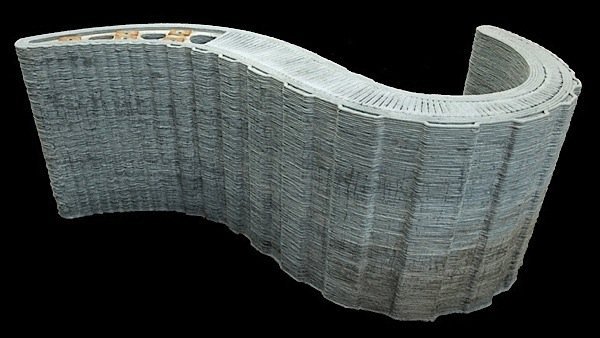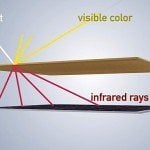Companies and academic researchers have been working for several years now to produce a viable form of 3D printing that can be used to build structures in the construction industry. A Chinese company, Yingchuang New Materials, is reported to have devised an “additive manufacturing device” that can 3D print self-supporting structures from concrete mixed with construction waste. The company demonstrated the technique earlier this year at a trade fair in Shanghai, producing ten small concrete houses, not including roofs, in a single day.
The search for a mainstream 3D concrete printer that can be widely used in the construction industry is likely to get a boost from the just-announced participation of one of Europe’s biggest construction and materials companies, Skanska. The Sweden-based concrete giant has announced that it too is pursuing this technology with the aim of developing the “world’s first commercial concrete printing robot.” To that end, Skanska has signed a collaboration agreement with Loughborough University in England, where researchers have been working on the 3D printing technology since 2007. The university team has developed a model that has concrete printers fitted to a gantry and a robotic arm.
The computer-controlled printer deposits “high-performance” concrete in successive layers until the desired object—a wall, for example—is created. It can also make things that cannot be manufactured by conventional processes, according to Skanska, such as “complex structural components, curved cladding panels and architectural features.”
According to a statement from Skanska, the agreement with Loughborough puts the company in a good position to capitalize on an emerging technology “with the potential to revolutionize the design and construction process.”
Used as part of a prefabrication process, 3D concrete printing can reduce the time it takes to create “complex elements” of buildings “from weeks to hours.” Skanska spokesman Rob Francis said they expect to achieve a level of quality and efficiency that has never been seen before in construction.
New developments like 3D concrete printing are necessary, according to one of the Loughborough researchers, because the industry has become so much more demanding in terms of design and construction. The team, said Dr. Richard Buswell, has been convinced of the viability of the process in the lab, “but it now needs the industry to adapt the technology to service real applications in construction and architecture.”
Also working with Skanska on the 3D concrete printer is the London-based, world-renowned architectural firm of Foster and Partners.


































